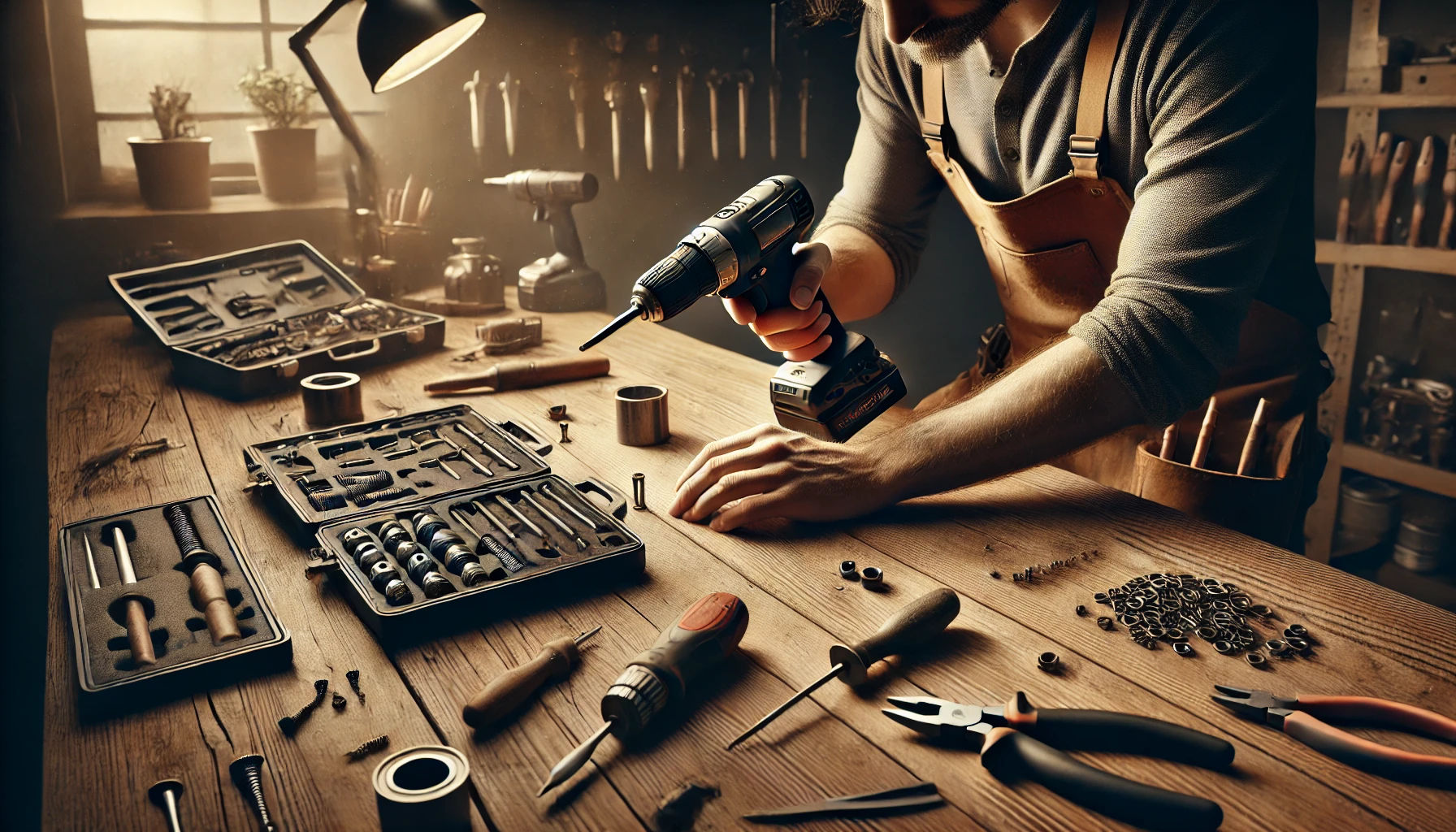The sound of the modern workshop used to be fast — drills whirring, saws slicing, and parts being swapped out at the first sign of wear.
But that rhythm is changing.
A quiet revolution is spreading across maker culture — one that values repair over replacement, and longevity over convenience.
At ToolCraftz, we’ve seen the tools themselves get smarter, but now, it’s the craftsmen who are evolving — rediscovering the lost art of maintenance in a world obsessed with the new.
The Return of the Repair Mindset
For decades, innovation meant constant upgrade cycles — a new drill every two years, a fresh set of batteries every season.
But as sustainability becomes central to every industry, makers and tool enthusiasts are beginning to ask: Why throw away what you can fix?
This “repair-first” philosophy marks a turning point — not just for the environment, but for craftsmanship itself.
Every time you repair instead of replace, you preserve skill, story, and sustainability — the three cornerstones of modern making.
This shift ties directly into what we explored in Smart Tools and IoT in DIY: The Future of Connected Craftsmanship — where connected tools now collect data to help you maintain rather than discard.
According to GreenBiz, extending a tool’s lifespan by just 25% can cut total energy waste by up to 30% — proving that sustainability begins not in the factory, but in the workshop.
Smarter Tools, Longer Lives
The repair movement isn’t just cultural — it’s technological.
New generations of smart tools are being designed with self-diagnostics, modular parts, and predictive maintenance systems that make repairs easier than replacements.
Many manufacturers are adopting modular construction, allowing users to replace individual motors, batteries, or housings instead of entire devices.
This modularity — made possible by AI-powered tool monitoring from our feature on How AI Is Reinventing the Future of Tools and Workshops — means the tools themselves help users spot problems before they break.
It’s no longer about waiting for failure; it’s about listening to what your tools are telling you.
Sustainability Meets Precision
Repair culture and smart technology share a common goal: efficiency without excess.
Modern systems like tabless battery technology and IoT-based diagnostics are making power tools more sustainable by design.
They minimize heat, optimize charge cycles, and prevent premature failure — creating a self-sustaining ecosystem where each component lasts longer.
As Fast Company notes, the “circular design” movement in manufacturing — where products are built to be repaired, reused, and remade — is one of the most impactful sustainability shifts of the decade.
Craftsmanship as Stewardship
There’s something deeply human about fixing what’s broken.
Each repair connects you to your tools — it turns ownership into partnership.
In a connected world, where AI-driven systems can already predict tool fatigue (as seen in Inside the Smart Workshop), the act of manual repair becomes an act of purpose.
It’s a reminder that no matter how advanced our systems become, craftsmanship remains a dialogue between maker and material — not a transaction.
As workshops become more intelligent and sustainable, that relationship will only deepen.
The Repair Economy
Repair isn’t just an ethic — it’s a growing economy.
From community tool libraries to “Right to Repair” legislation, the culture of maintenance is being woven into policy and business.
Brands are starting to compete on repairability scores, spare part availability, and software transparency.
The European Union’s Ecodesign Directive is already mandating design standards that favor repairability — a move likely to influence global tool design standards in the coming years.
At ToolCraftz, we believe this will define the next frontier of tool innovation — not just making better tools, but making tools that stay better longer.
Redefining Progress
The future of craftsmanship isn’t about chasing the newest gadget — it’s about mastering longevity.
Smart tools, sustainable materials, and digital diagnostics are helping us slow down and refine the relationship between efficiency and ethics.
Repair is no longer resistance to progress — it is progress.
Because in every tool you fix, every part you replace, and every system you preserve, you’re building something more valuable than a product.
You’re building a legacy.
